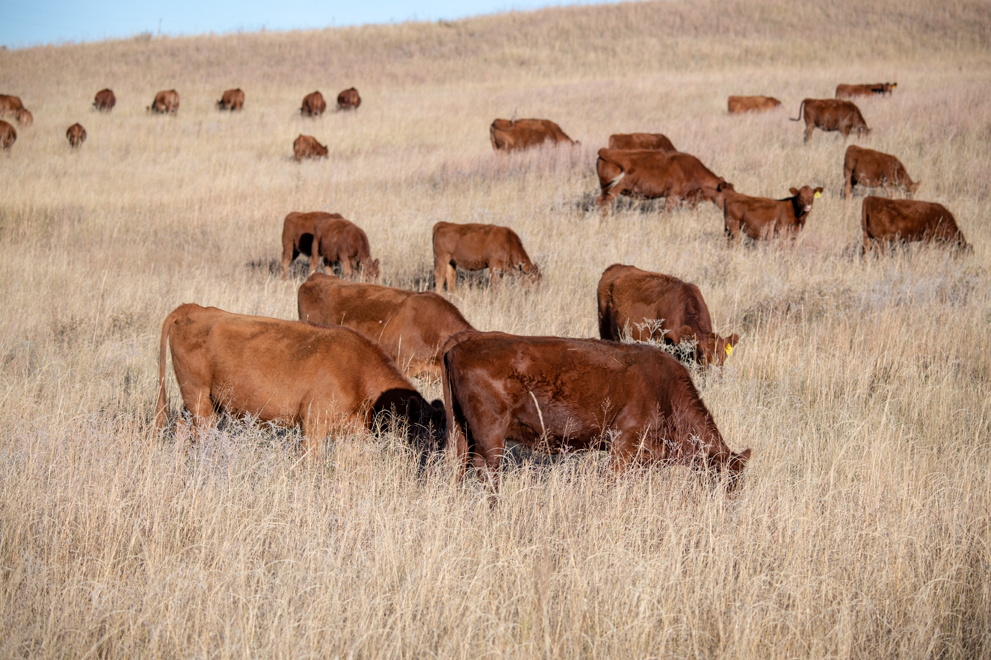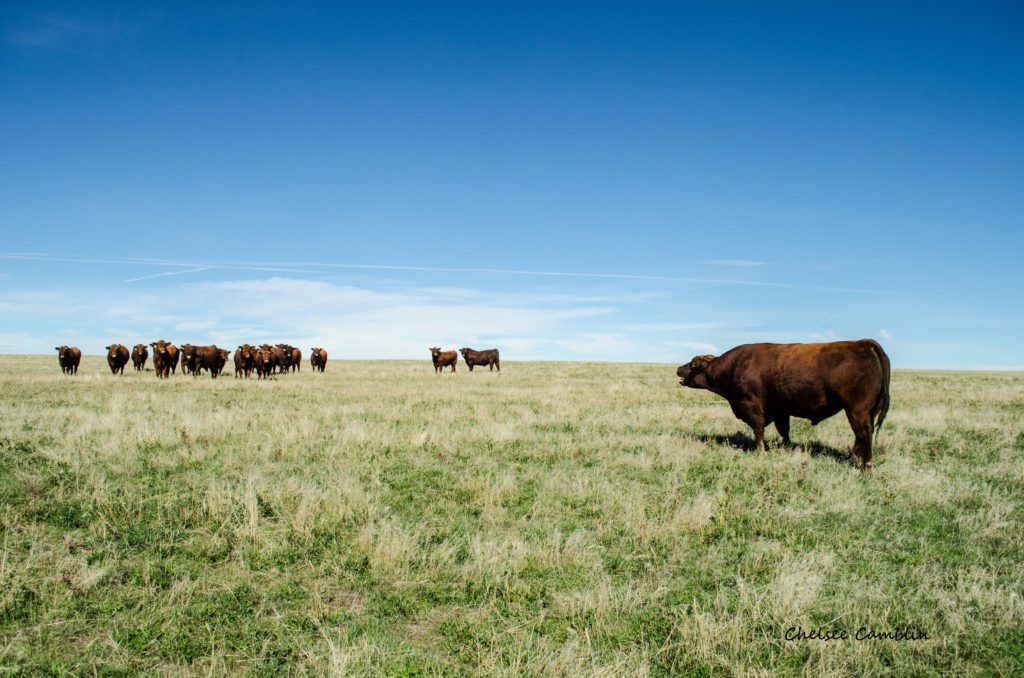As spring-born calves are weaned, now is a good time to grade your cow herd performance. This will take records or a pretty good memory because numbers needed in the calculations will be numbers of cows exposed to the bull last year that resulted in the calf crop weaned this fall. The first three measures to calculate cow herd performance come from the Beef Improvement Federation Guidelines: number of cows exposed, pregnancy percent, and live calving percent. Here’s how to calculate them.
The number of females exposed last year to produce this year’s calf crop is easy to calculate if no cows move in or out of the herd. If culling and/or replacing females, here is how to adjust this value:
- Subtract from the initial number any females exposed to the bull that died or were identified to be sold or transferred out of the herd prior to producing a calf this year.
- Do not subtract any females exposed that came up open and were sold.
- Add any purchased females expected to produce a calf during the upcoming calving season on your operation.
Correctly calculate the number of cows exposed before moving on to the next calculation to ensure an accurate measure of your cowherd performance.
Pregnancy percentage (or percent diagnosed pregnant) is the number of cows exposed to a bull that are diagnosed as pregnant divided by the number of females exposed multiplied by 100. If a female was diagnosed as pregnant and does not calve, it means that she either aborted the calf or was misdiagnosed as pregnant. If there are no signs of abortion or a fetus is not found, consider the female as not being pregnant.
Live calving percentage is the number of live calves born divided by the number of females exposed multiplied by 100. A calf that gets up and nurses is considered a live calf.
Calving percentage is the number of calves born live plus full-term calves born dead divided by the number of females exposed and multiplied by 100. Abortions are not included in this number. Twin calves are counted as one calf.
The next calculations measure calf death losses from birth to weaning. Once a calf is born and nurses, they have a good chance to survive until weaning. This number should be low, but losses due to weather during the calving season, such as a blizzard, or health problems like respiratory disease will impact this number. Calf losses due to calving difficulty and full-term calves born dead are also accounted for.
Death Loss Percentage based on calves born is the number of deaths prior to weaning divided by the number of calves born multiplied by 100.
Death Loss Percentage based on females exposed is the number of deaths prior to weaning divided by the number of females exposed multiplied by 100.
Calves lost to abortions are not accounted for in these measures. Aborted calves are ones lost that have no characteristics of being full-term. Many times, producers do not see aborted fetuses. If the abortion occurs before pregnancy diagnosis, they are diagnosed as not pregnant at pregnancy check.
Weaning Percent (also known as percent calf crop) is the number of calves weaned divided by number of females exposed multiplied by 100. This percentage is a culmination of all the previous calculations that impact potential calves to wean.
A final measure to calculate is the pounds of calf weaned per female exposed. This is the total pounds weaned divided by the number of females exposed. This measure reflects more accurately on cowherd performance than average weaning weight. This measure increases by weaning more calves and/or increasing weaning weight. Please note if weaning date varies from year to year, you may need to adjust weaning weight to make yearly comparisons.
We’ll use an example herd to make the calculations. Our example herd had 200 cows exposed to bulls during the breeding season last year. Ten pregnant cows were added to the herd. Five cows were identified as culls to be moved after the breeding season. Five pairs were sold before preg-checking. The vet diagnosed 189 cows as pregnant last fall. This spring, 188 cows calved. This herd had four full-term calves that died at calving. Three calves died prior to weaning, resulting in 181 calves weaned at an average weaning weight of 500 lb.

Weaning weight can be increased by selecting for growth traits in the breeding program, but if replacement females are retained, cow weight will increase over time. A fixed set of forage/feed resources can feed fewer, heavier cows. Weaning weight can also be increased by selecting higher milk EPDs, which is defined as weaning weight due to milk. As milk increases, nutritional requirements for the cowherd increases. Again, a fixed set of forage/feed resources can feed fewer, heavier milking cows.
The greatest loss of potential calves to wean comes from cows not becoming pregnant during the breeding season. Calf losses due to abortion should be 1% of exposed females or less. Calf losses at calving can be as high as 3.5% for spring-calving cows if there is a blizzard, freezing rain, etc. Calf losses from calving to weaning, should be low and in the 1% or lower range. It can be higher if the herd encounters respiratory diseases. The next BeefWatch article will address how to positively impact pregnancy percentage and how important it is to manage the Post-Partum Interval (PPI).
Reference:
https://extensionpublications.unl.edu/assets/html/g2094/build/g2094.htm.
https://beefimprovement.org/wp-content/uploads/2013/07/BIFGuidelinesFinal_updated0916.pdf. Page 16
SOURCE: UNL Beef, Institute of Agriculture and Natural Resources, Rick Rasby, Extension Specialist | T.L. Meyer, Nebraska Extension Educator
PHOTO: Cows grazing on rangeland, Troy Walz.











